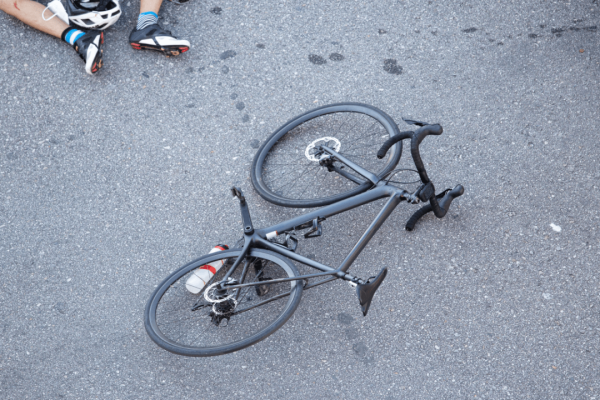
Who Pays the Settlement in a Car Accident? Your Complete Guide
Who Pays the Settlement in a Car Accident
When you’re involved in a car accident, understanding who pays the settlement in a car accident can significantly impact your financial recovery. The payment source depends on several factors, including fault determination, insurance coverage, and state laws.
In most cases, the at-fault driver’s insurance company handles settlement payments. However, multiple parties may contribute to your settlement depending on your specific situation. This guide explains exactly who pays, when they pay, and what factors influence settlement funding.
Insurance Companies: Primary Settlement Payers
The at-fault driver’s auto insurance company typically pays the majority of car accident settlements. These insurers are legally required to compensate victims up to their policy limits when their policyholder causes an accident.
Liability insurance coverage varies by state, but most require minimum amounts for:
- Bodily injury per person
- Bodily injury per accident
- Property damage per accident
The National Highway Traffic Safety Administration (NHTSA) tracks accident statistics and safety requirements that influence insurance coverage standards.
When the at-fault driver carries adequate coverage, their insurance handles medical bills, lost wages, property damage, and pain and suffering compensation. However, if damages exceed policy limits, victims may pursue additional compensation through other sources.
Driver Responsibility: When Personal Assets Are at Risk
The at-fault driver personally pays settlement amounts when insurance coverage is insufficient. This situation occurs when damages exceed the driver’s policy limits or when they drive without insurance.
Drivers may face personal liability for:
- Damages exceeding insurance limits
- Punitive damages (in some states)
- Legal fees and court costs
- Settlement amounts when uninsured
Personal assets like homes, savings accounts, and wages can be garnished to satisfy judgment amounts. This risk highlights why adequate insurance coverage is crucial for all drivers.
Your Insurance Role: Coverage That Protects You
Your own insurance may contribute to settlement payments through several coverage types, regardless of who pays the settlement in a car accident initially.
Uninsured/Underinsured Motorist Coverage
This coverage pays when the at-fault driver lacks adequate insurance. It covers medical expenses, lost wages, and other damages up to your policy limits.
Personal Injury Protection (PIP)
Required in no-fault states, PIP covers your medical expenses and lost wages immediately after an accident, regardless of fault.
Collision Coverage
This optional coverage pays for vehicle repairs or replacement, minus your deductible, when you’re involved in an accident.
Multiple Party Scenarios: Shared Settlement Responsibility
Complex accidents involving multiple at-fault parties require shared settlement payments. Each party’s insurance company pays based on their percentage of fault.
For example, if Driver A is 70% at fault and Driver B is 30% at fault for your injuries, their respective insurance companies split settlement costs accordingly. Your total compensation comes from both sources.
Commercial vehicles, government entities, or product manufacturers may also contribute to settlements when their negligence contributes to accidents.
State Laws Impact: No-Fault vs. At-Fault Systems
Your state’s insurance laws significantly influence who pays the settlement in a car accident and how quickly you receive compensation.
At-Fault States: The responsible driver’s insurance pays all damages. You can sue for additional compensation if needed. The Insurance Information Institute provides detailed state-by-state insurance requirements.
No-Fault States: Your own insurance pays initial expenses through PIP coverage, regardless of fault. You can only sue the at-fault driver for severe injuries or damages exceeding certain thresholds. The National Association of Insurance Commissioners (NAIC) maintains current no-fault state listings.
Choice No-Fault States: You can choose between no-fault and traditional tort coverage when purchasing insurance.
Final Settlement Facts: Who Pays the Settlement in a Car Accident
Understanding payment sources helps you navigate the claims process more effectively. The at-fault driver’s insurance typically handles payments, but your coverage, state laws, and accident complexity influence the final outcome.
Most settlements involve negotiations between insurance companies rather than court proceedings. However, having legal representation ensures you understand all potential payment sources and receive fair compensation for your injuries and damages.
Who Pays the Settlement in a Car Accident Consultation
Don’t navigate car accident settlements alone—the payment process can be complex and insurance companies may not offer fair compensation initially. Contact our experienced car accident attorneys for a free case evaluation to understand your rights and maximize your settlement recovery.
Frequently Asked Questions
1. Does the at-fault driver pay out of pocket?
The at-fault driver’s insurance company typically pays settlements up to policy limits. The driver pays personally only when damages exceed coverage or they’re uninsured.
2. What happens if the at-fault driver has no insurance?
Your uninsured motorist coverage pays the settlement, or you may need to pursue the driver’s personal assets through legal action.
3. Can both insurance companies pay my settlement?
Yes, in complex accidents involving multiple at-fault parties, several insurance companies may contribute to your total settlement based on each party’s percentage of fault.
4. How long does it take to receive settlement payment?
Most settlements are paid within 30-60 days after agreement, though complex cases involving multiple payers may take longer to process.
5. Will my insurance rates increase if my company pays part of the settlement?
Your rates typically won’t increase if you’re not at fault, even when your uninsured motorist or PIP coverage contributes to settlement payments.
Key Takeaways
- The at-fault driver’s insurance company pays most car accident settlements up to policy limits
- At-fault drivers pay personally when insurance coverage is insufficient or absent
- Your own insurance may contribute through uninsured motorist, PIP, or collision coverage
- Multiple parties may share settlement responsibility in complex accidents involving shared fault
- State laws determine whether your insurance or the at-fault party’s insurance pays first
Free Accident Claim Review
Complete the form to have an attorney review your accident claimCOMPLETE THE FORM TO BE CONNECTED WITH AN ACCIDENT ATTORNEY
No Matching Partners at the Moment
Thank you for your inquiry but there are no matches for you at this time. Please come back later and try again.
Recent Posts
- Understanding the Bicycle Accident Legal Process: A Comprehensive Guide for Injured Cyclists
- What Type of Bike Has the Most Accidents: How to Protect Your Rights
- Where Do Most Bicycle Fatalities Happen: Critical Locations and Legal Rights
- What Is the Most Common Injury in Cycling: Understanding Your Legal Rights After a Bicycle Accident
- What Percent of Bike Riders Get Into Accidents: Legal Help
Archives
- December 2025
- November 2025
- October 2025
- September 2025
- August 2025
- July 2025
- June 2025
- May 2025
- March 2025
- February 2025
- January 2025
- October 2024
- September 2024
- August 2024
- July 2024
- June 2024
- May 2024
- April 2024
- March 2024
- February 2024
- January 2024
- December 2023
- November 2023
- October 2023
- September 2023
- August 2023
- July 2023
- June 2023
- May 2023
- March 2023
- February 2023
- January 2023
- November 2022
- October 2022
- September 2022
- August 2022
- May 2022
- April 2022
- March 2022
- February 2022
- January 2022
- December 2021
- November 2021





